
Architecture of Nepal: Its Styles and Features
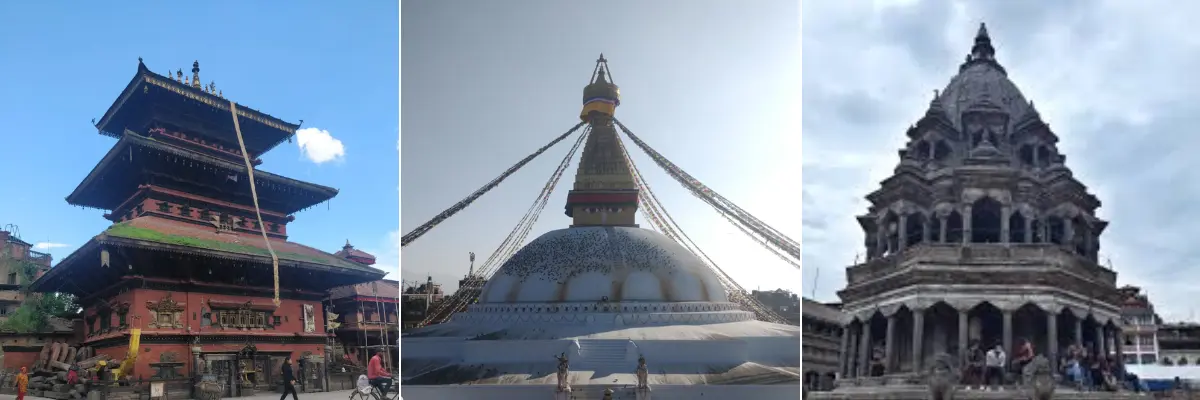
Table of Contents
In the heart of the Himalayas, Nepal is one of the most beautiful countries. Nepal is a living museum of archeological and architectural heritage. From the towering peaks in the Himalayan region to the plains of Terai, the charm and Nepal architecture is a reflection of its vibrant landscapes, ethical richness, spiritual traditions, and historical evolution.
In no way is it a one-style dominance; Nepal’s built environment is an expression of a distinctive and charming interplay between form, faith, and function.
Three Major Styles of Architecture in Nepal
Nepal’s cultural architecture falls into three broad styles: Pagoda, Stupa, and Shikhara. Each type, although religious in origin, is also a reflection of Nepal’s art and engineering abilities.
Pagoda Style: The Sacred Tiers of Heaven
The Pagoda style, perhaps the most iconic in Nepal, originated here before spreading to Tibet, China, and Japan. Architects build these pagoda-style Nepali architecture structures vertically, with multiple overhanging roofs, each tier smaller than the one below, symbolizing the ascent to enlightenment.
Key Features
- Square or rectangular base, often made of brick
- Carved wooden struts (called “tunnels”) supporting the roofs
- Stepped roofs with upward-curving eaves
- A golden pinnacle or gajur at the top represents the divine
Famous Pagoda Style Nepal Architecture Examples
Here are a couple of famous pagoda-style Nepal architecture examples:
Nyatapola Temple, Bhaktapur: Rising five stories high, builders constructed Nepal’s tallest pagoda-style temple in 1702. Each level is guarded by symbolic protectors—mythical beasts, lions, and wrestlers—emphasizing its sacredness.
Taleju Bhawani Temples in Kathmandu, Patan, and Bhaktapur: These royal temples are off-limits to the general public but remain important ceremonial centres.
The harmony of red bricks, dark timber, and gilded finials creates a striking contrast against Nepal’s blue skies and green hills.
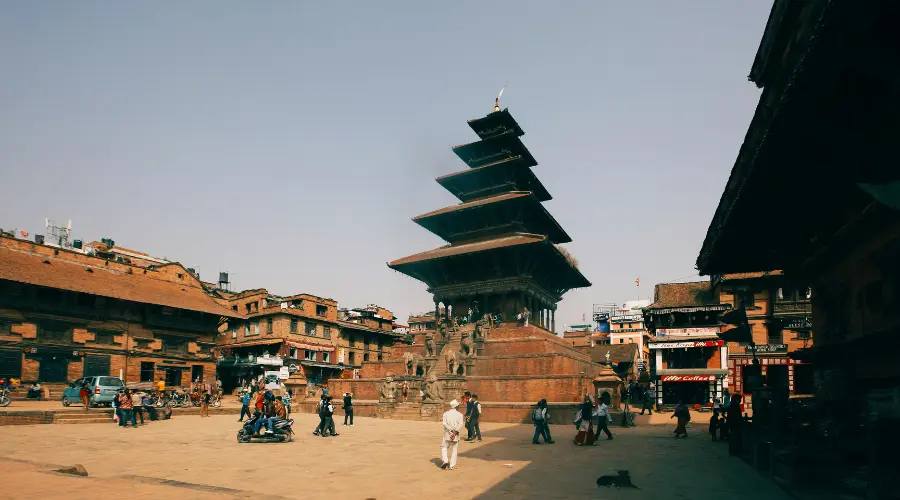
Shikhar Style: Towering Devotion
Unlike the wide base of pagodas, Shikhara-style temples are defined by their soaring, curvilinear towers that resemble a mountain, aptly symbolizing Mount Meru, the cosmic mountain in Hindu cosmology.
Key Features
- Tall, pointed tower above the sanctum (garbhagriha)
- Carved stone surface with floral and geometric motifs
- Less emphasis on horizontal layering and more on verticality
Famous Shikhar Style Nepal Architecture Examples
Here is a famous shikhar-style Nepal architecture example:
Krishna Mandir, Patan Durbar Square: Built entirely of stone by King Siddhi Narsingh Malla in the 17th century, this temple breaks from the wooden tradition and represents a bold, regal form of the Shikhara style. It features 21 golden pinnacles and beautifully detailed columns.
This style evokes a strong sense of ascension, pulling the eye upward as if inviting the soul toward the heavens.

Stupa Style: Spiritual Symbols in Stone
The stupa is the oldest Buddhist architectural form found throughout Nepal, especially in Tibetan-influenced regions. It’s a sacred structure, not meant for entry but for circumambulation and meditation.
Design
- A whitewashed dome symbolizing the earth and the womb of the universe
- Prayer wheels surround the base, and fluttering prayer flags are in all directions
- A square tower above the dome, bearing the eyes of Buddha, looking in four directions
- 13-step spire representing stages of enlightenment
Major Stupas in Nepal
Here are some of the famous pagoda-style Nepal architecture examples:
Boudhanath Stupa: A massive hemispherical stupa in Kathmandu, standing 36 meters (118 feet) tall. It’s a UNESCO World Heritage Site and spiritual centre for Tibetan Buddhists in Nepal.
Swoyambhunath (Monkey Temple): Located on a hilltop, it is one of the oldest religious sites in the country and offers panoramic views of the Kathmandu Valley.
Walking clockwise around a stupa while spinning prayer wheels is more than tradition—it’s a living act of devotion for millions.
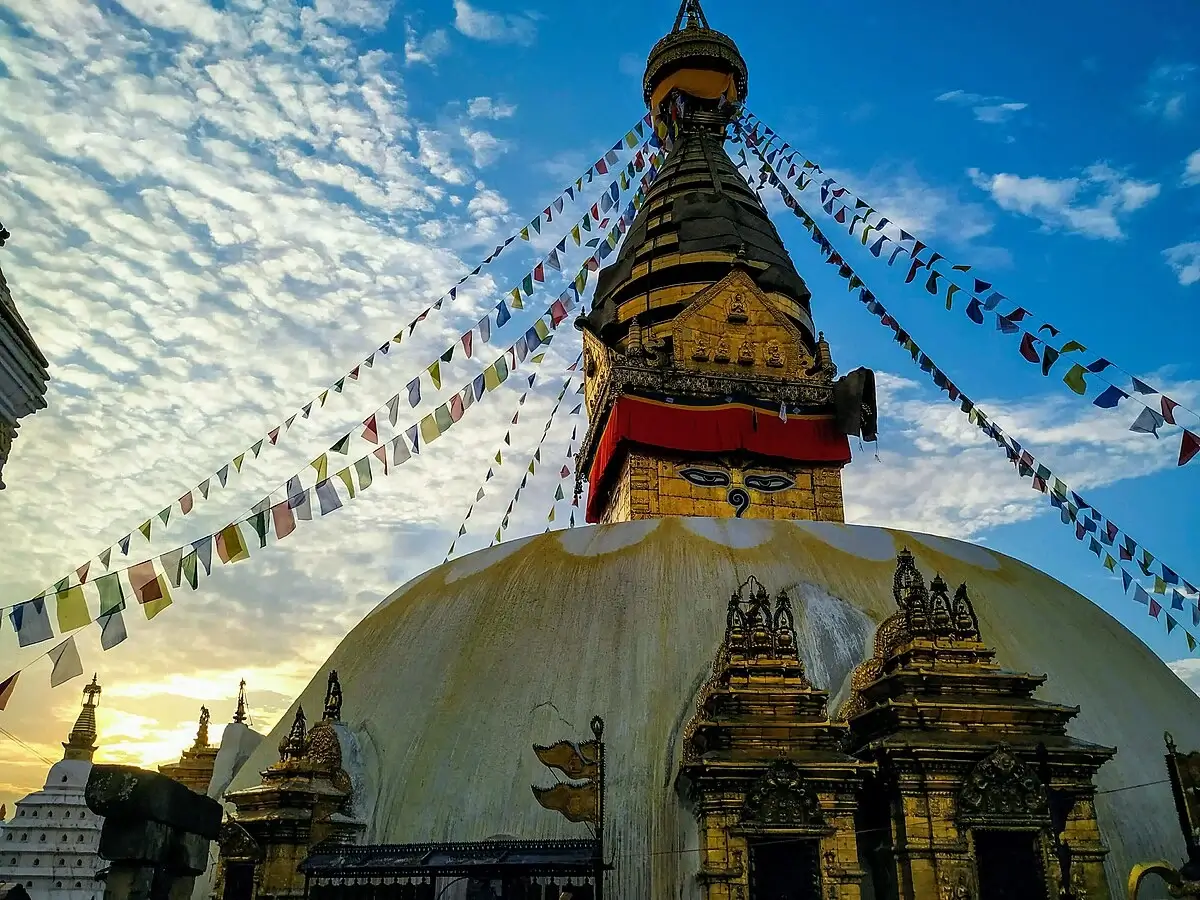
Traditional Newari Architecture
No other ethnic group has contributed more to Nepalese urban architecture than the Newars, the original settlers of the Kathmandu Valley. Their architectural genius is most visible in the cities of Kathmandu, Patan, and Bhaktapur.
The traditional Newari architecture of Nepal is the soul of Nepal and the ‘City of Temples’, Kathmandu Valley.
Architectural Attributes
- Handcrafted brick facades with decorative bricklaying patterns
- Intricately carved wooden doors, windows, and struts featuring deities, mythical creatures, and sacred symbols
- Multi-storied townhouses with central courtyards for light and air
- Water spouts, stone fountains, and communal rest houses (pati, sattal) are integrated into public spaces
Famous Sites in Kathmandu Valley
Let’s discuss briefly about the Patan and Bhaktapur Durbar Squares:
Patan Durbar Square: A masterpiece of Newari architecture, filled with temples, courtyards, and a former royal palace with a golden gate and sundials.
Bhaktapur Durbar Square: Known for the 55-Window Palace and the elegant Vatsala Temple, this square still resonates with medieval charm. Newari buildings and homes are not only beautiful; they are perfectly adapted to the local climate, with insulated walls and inner courtyards for control of air movement.
Architectural structure of Monasteries
In the highlands of Nepal, especially where Tibetan Buddhism prevails, there is a stark but serene architecture. There, Nepali architecture buildings need to withstand cold winds, heavy snow, and isolation.
Key Characteristics of Monastery Architecture
- Flat or slightly sloped roofs for snow collection
- Whitewashed stone walls and small wooden windows
- Brightly painted interiors with frescoes of deities and mandalas
- Prayer flags fluttering on rooftops and hillsides
Famous Monasteries in Nepal
Tengboche Monastery (Everest Region): Surrounded by peaks like Ama Dablam and Everest, it offers spiritual solace and stunning views. It is also the spiritual centre of the Sherpas.
Mu Gompa (Manaslu Region): Near the Tibetan border, this remote monastery is 3,700 meters (12,139 ft) high and represents determination and isolation from worldly things. Its rough-hewn stone building merges with the unforgiving Himalayan landscape.
So, these monasteries are not merely religious centres—they are umbilical to far-off populations, teaching, sheltering, and offering community.

Vernacular and Rural Architecture
This design of architecture is usually built by hand and influenced by nature. The Nepalese architecture in the rural regions is influenced by nature, local materials, and traditions. Even though these houses are not built by certified engineers, they have been built by local people. Nevertheless, the design and process of rural Nepal architecture buildings are passed down to their offspring over the generations.
Terai
Materials: Mud, Bamboo, and Breeze
Design: Thatched roofs over mud-plastered walls, open courtyards, and raised platforms to be protected from floods.
Verandas (Dalan) for evening gatherings under neem trees.
Houses are decorated with folk art and religious symbols.
Mid-Hills
Materials: Stone walls, mud mortar, Slate or tin Strongholds
Ghyampo Houses (Mustang): Flat roofs of packed earth, storing winter fodder.
Newari Farmhouses: Ornate windows even in humble homes.
High Himalayas
Materials: Rough-cut stones, flat wooden roofs
Design: Tibetan-style homes with thick stone walls and small or no windows to preserve heat.
Wooden balconies stacked like honeycombs in Upper Mustang.
These houses are not just shelters but a reflection of the bond between people, culture, terrain and climate.
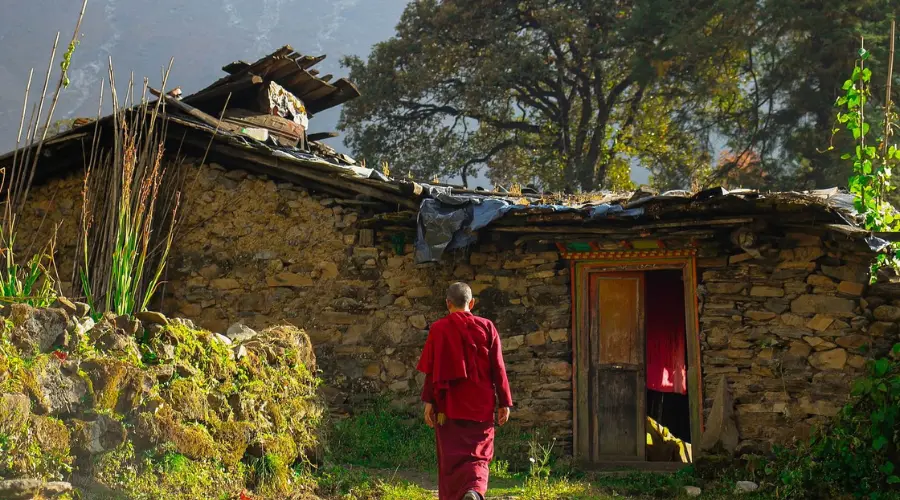
Modern Architectures and Challenges
In urban Nepal, there is growing interest in the blending of modern design with traditional looks. In addition, some of the newer hotels, cafes, and even homes in Kathmandu and Pokhara have pagoda-style roofs, Newari windows, and stupa motifs.
Nepal’s built heritage is under threat from:
- The 2015 earthquake damaged or destroyed many heritage buildings.
- Urban sprawl and uncontrolled development
- Loss of Nepal traditional architecture knowledge and artisans
Further, restoration and conservation efforts, including support from UNESCO and local municipalities, are gradually rebuilding what was lost and preserving what remains.
Overall Overview of Nepal Architecture
Nepalese Architecture is its living memory. From the golden-tipped pagodas of the Kathmandu Valley to the humble stone homes of Dolpo, Nepal architecture is more than art—it is Nepalese architecture history etched in timber, faith grounded in stone, and life built into the very land.
In addition, every strut, every carved doorframe, and every whitewashed monastery wall in Nepal speaks of devotion, resilience, creativity, and a timeless connection to both earth and sky.
Want to know more?
Speak to an Expert





Sandip Dhungana
Nepal 🇳🇵
Whatsapp: +977-9823636377






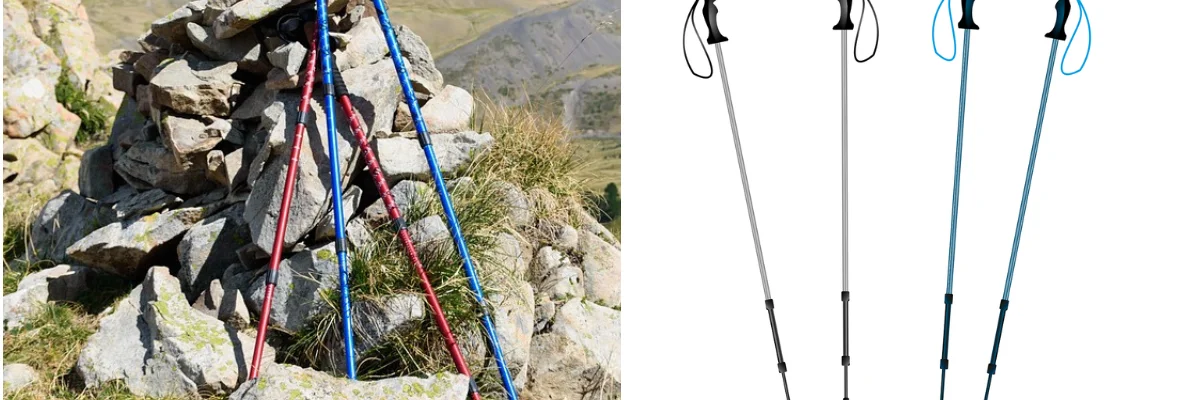

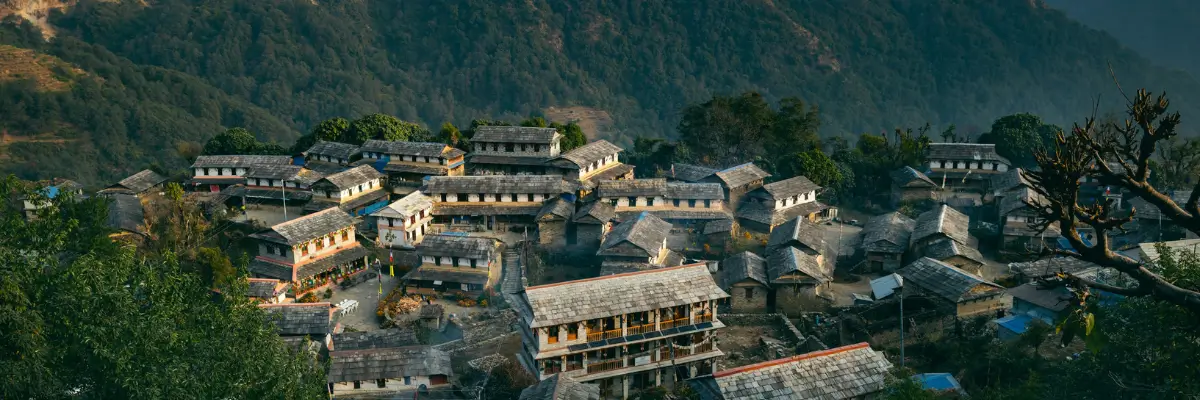


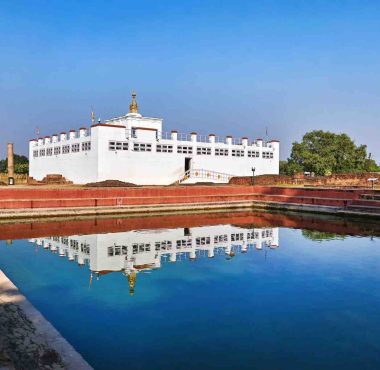
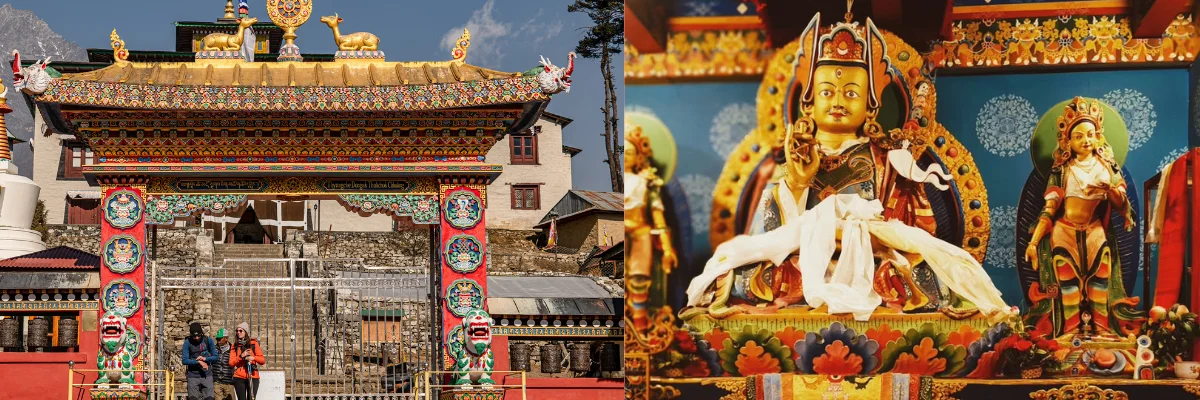
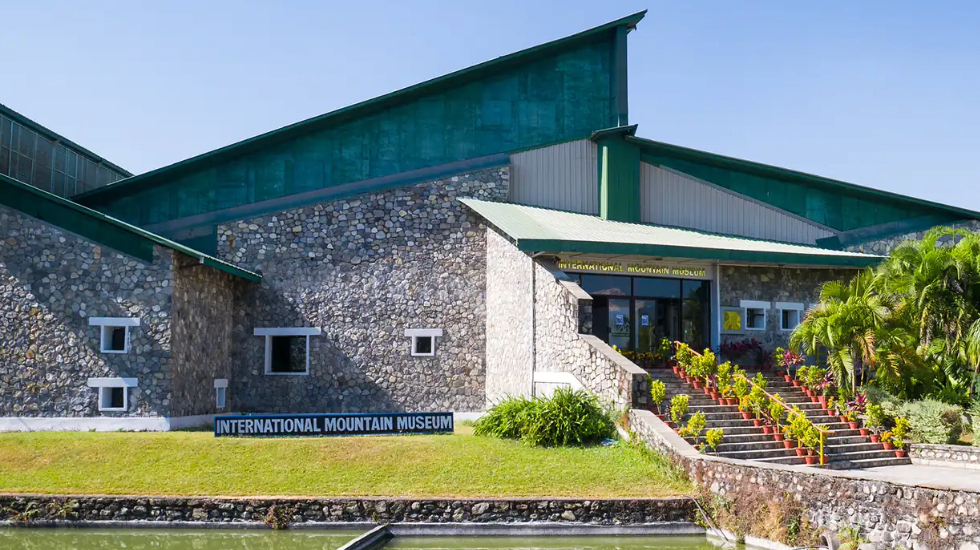















Leave Your Comment